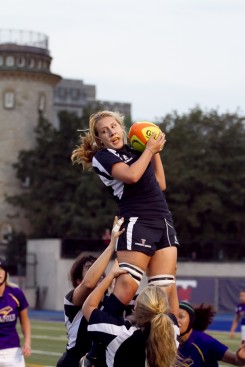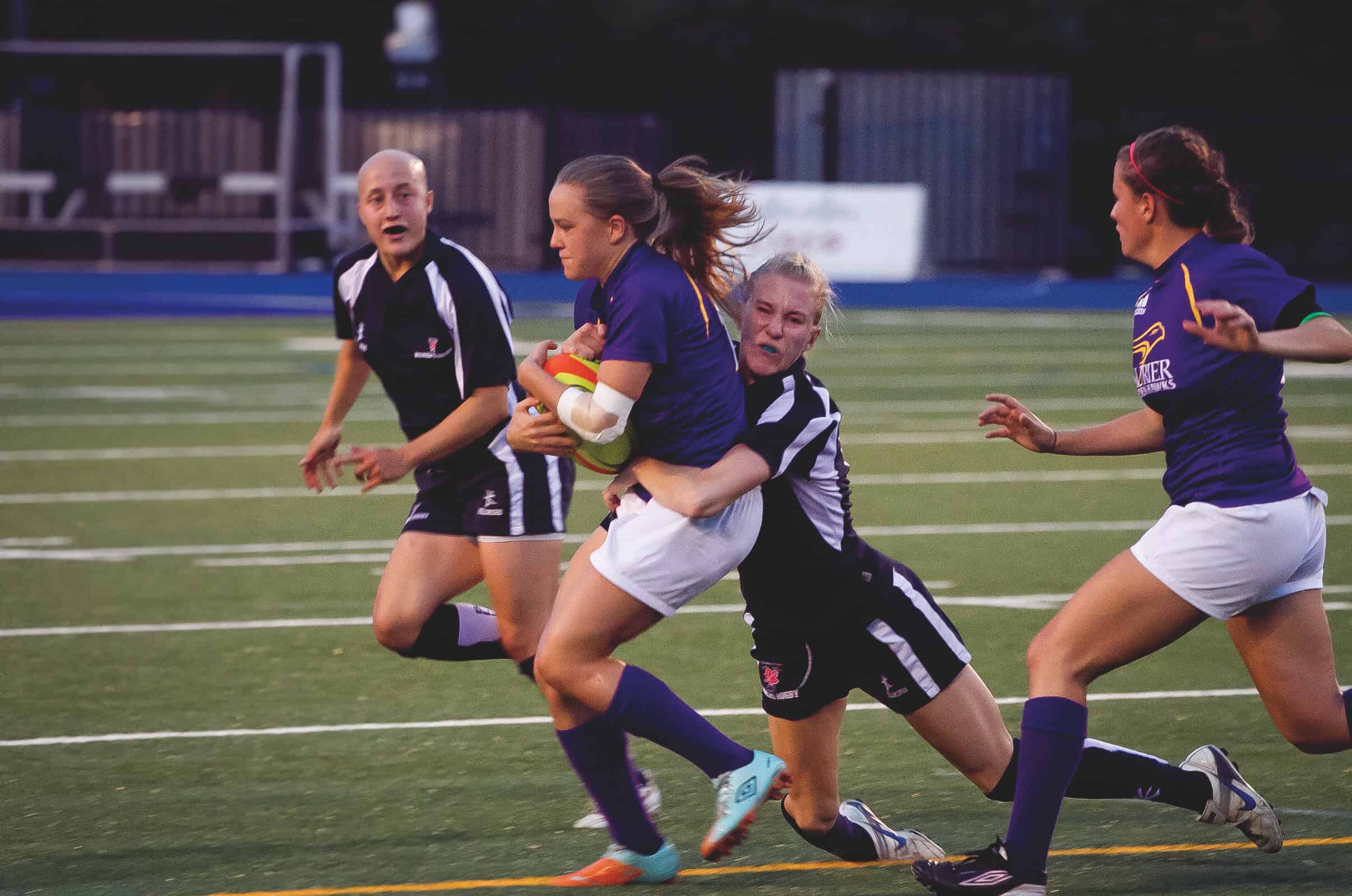A review of the University of Toronto’s Sport Model conducted by the Faculty of Kinesiology and Physical Health has left the Varsity Blues women’s rugby team fearing for its future as an intercollegiate program.
The review is intended as a “model to review our entire continuum of sports offerings,” says Anita Comella, assistant-dean, co-curricular physical activity and sport at KPE. The review’s recommendations include three proposed alternative sports models, all of which include the re-classification of the Varsity Blues men’s and women’s rugby programs as KPE intramural sports.

LINDSAY NEMETH/THE VARSITY
“At the KPE [intramural] level, we don’t compete against any OUA and CIS teams. It could potentially be tri-campus, but it’s up to essentially the colleges and the different faculties to field teams,” explains Mel Minisian, a fifth-year player on the women’s rugby team.
Minisian and her teammates fear that the reclassification of rugby as an intramural sport would hurt participation rates on campus. “It [would not be] the first time there has been a women’s rugby intramural; there was one years ago, and it folded, because there weren’t enough people involved in it. So there’s no hope for the sport if it goes that way.”
Comella is keen to stress that the three alternative models proposed in the review are just that — proposals. “It might be at the end of the day that none of the sport models that are being presented actually become the sports model,” she notes. “It could be a variation of any of those three, it could be someone proposing something completely different.”
U of T Director of Intercollegiate and High Performance Sport Beth Ali concurs. “It is a consultation process and no decision — absolutely no decision at all — has been made about any program,” she stresses. “The reason we’re doing the consultation now is that everybody is here on campus now.
A lot of times when universities change programs and teams are impacted very negatively, they do it in the summer when no-one is on campus.”
Public consultations about the Sport Model review are currently underway, and will continue through the end of November. A second round of consultations, based on the model proposed following this round, is expected in January, with a final decision to be made around March.
The chief problem facing the rugby programs, Ali says, is a lack of adequate facilities. “They have come to me and said, ‘We want to be competitive. This is what we need to be competitive,’” she says. “But I can’t provide that to them in our current model. What they need, we don’t have the space for.
Minisian acknowledges the problem of insufficient facilities for rugby, but says that downgrading the program is not the solution. “There’s been a few emails back and forth, and they’re almost saying that our lack of adequate training grounds has compromised our competitiveness. But instead of giving us the adequate training grounds, they’re just getting rid of the problem from the get-go.”
“The successful rugby programs are the ones that have a first- and second-team and an athlete development program that is not just the 15 athletes on the field plus an additional seven to 10 that make up the squad. It’s that, plus another 10 or 15. You need a lot of athletes,” claims Ali. “And the gap for us is that we don’t have the facilities to train that many athletes in competitive rugby.
In an intercollegiate program you never want to put athletes on the field who can’t prepare properly for that level of competition.”
Karla Telidetzki, a two-time OUA Russell Division MVP with the Blues who was selected to play for the Canadian national team following her move to U of T from the University of Alberta, strongly disagrees with Ali. “Not all of the successful teams have a full two-team size. I believe [CIS champions] St. Francis Xavier does, I’m not sure what the case is at a lot of other schools,” she says. “But basically they’ve severely overestimated the number of people we need, and they’ve also overestimated the amount of practice time we need.
They seem to think we need 30 hours a week of field time, which is outrageous.”
Amanda Capone — who has been on the women’s team for five years —notes that if the program is downgraded to intramural status, a lot of the players will lose the opportunity to compete at a high level. “They’re going to lose the 30+ athletes that we have,” she says. “We’re not going to transfer to soccer or volleyball. It’s not going to be a simple process of [moving] to one of those sports.”
Ali recognizes the achievement of players like Telidetzki, but says that the decline of U of T’s sports programs has hindered its ability to attract top talent. “Karla is a great example of a player who is playing in our intercollegiate programs who also plays on a national level,” she notes. “U of T used to have many, many examples like that, and our lack of success has diminished our ability to produce athletes like that in all of our sports.”
But Telidetzki points out that the downsizing and downgrading of programs is not going to help the university’s athletes gain national recognition. “I’ve played club rugby for seven or eight years now, and I never received any level of real recognition through club rugby in the way that I did at U of T.”
Whether or not the rugby teams survive the restructuring of U of T’s sports model, KPE and the Varsity Blues have a long road ahead if they intend to make the university a competitive force in intercollegiate sport once again.
“It requires building,” admits Comella. “Whatever decision is made about the Sport Model will require a concerted effort to build and rebuild. It will not happen overnight.”


